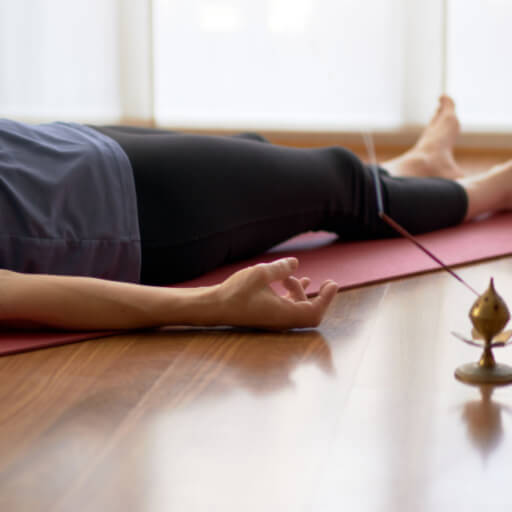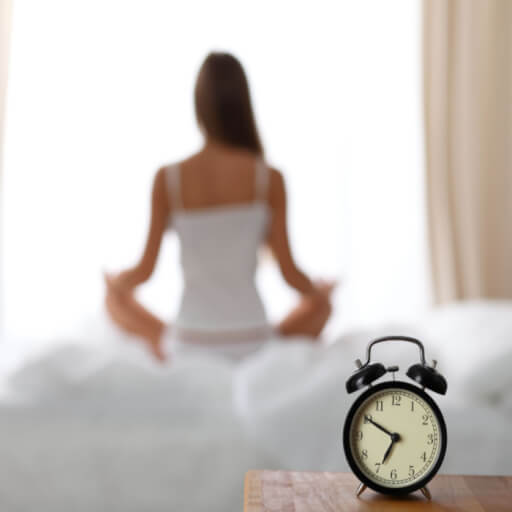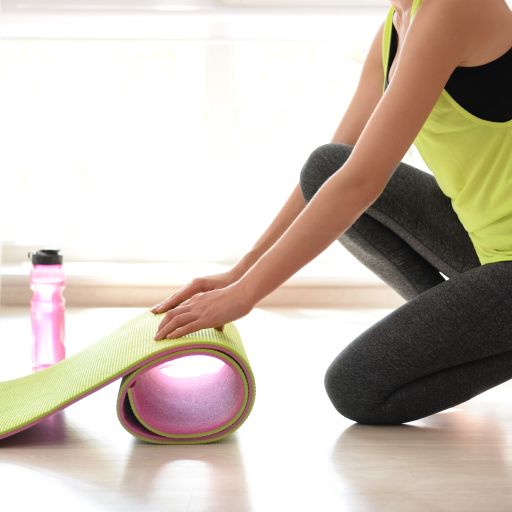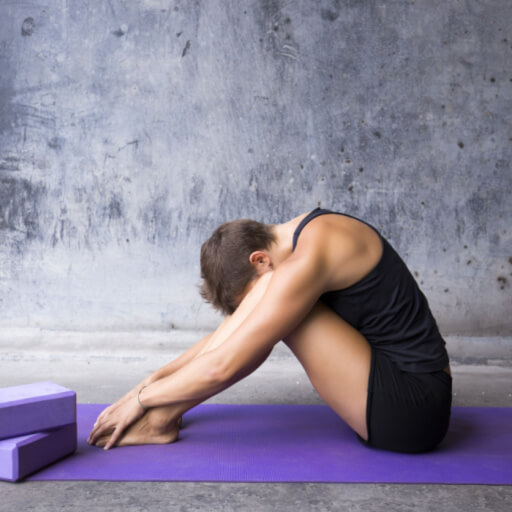
It is important to practise yoga for physical and mental well-being. Many individuals may face depression or anxiety, so it is always advisable to consult an expert. However, practising yoga is a natural way to increase serotonin production, which can help relieve chronic stress patterns and promote physical and mental health.
What you need to know:
What is depression?

Depression is a common medical condition characterised by persistent loss of interest and a feeling of sadness or distress. Depression can lead to certain chronic conditions, including obesity, cardiovascular diseases, asthma, diabetes and hypertension. The general symptoms of depression include decreased energy and fatigue, reduced levels of concentration, and difficulty sleeping and waking up, among others.
Yoga therapy encourages you to focus on positive images to calm your mind and body. There are certain yoga poses for depression that can help you find your way out of it or can help you manage depression.
What is anxiety?
People with anxiety persistently worry and fear everyday situations. Common anxiety symptoms include hyperventilation, restlessness, panicking, trouble sleeping and concentrating, excessive sweating, and experiencing gastrointestinal problems.
Both depression and anxiety can significantly impact a person’s mental and physical well-being. They can affect relationships, work or school performance, and overall quality of life. As a result, practise morning meditation or deep breathing exercises, which can shortly calm you down.
Causes and symptoms of depression
Here are some of the causes and symptoms of depression and anxiety:
Causes of depression and anxiety
Depression:
- Genetic factors: Depression can be prevalent through generations, so family history can raise the risk.
- Environmental factors: Living in a chronically stressful environment, experiencing trauma, or facing social isolation can contribute to depression.
- Substance abuse: Drug or alcohol abuse can lead to depression.
Anxiety:
- Brain chemistry: Imbalances in neurotransmitters, such as serotonin and dopamine, can contribute to anxiety.
- Traumatic experiences: Past traumatic events can trigger anxiety.
Symptoms of depression and anxiety:
Depression:
- Loss of energy: Feeling fatigued even for simple tasks.
- Changes in appetite and weight: Significant weight loss and changes in appetite.
- Feelings of guilt or worthlessness: Excessive self-blame or feeling worthless.
Anxiety:
- Difficulty concentrating: Trouble focusing, experiencing mind blanks, or having a racing mind.
- Muscle tension: Feeling tense or experiencing muscle aches and tension, often in the neck, shoulders, or jaw.
- Panic attacks: Sudden and intense episodes of extreme fear or discomfort, with chest pain, dizziness, or a sense of impending doom.
Yoga poses for depression and anxiety
Practising yoga can alter your inner landscape, change your thought patterns, and make you more mindful of the present moment. Practise morning meditation to keep your depression and anxiety at bay by reducing the stress-causing cortisol hormone.
-
Butterfly Pose (Baddha Konasana)
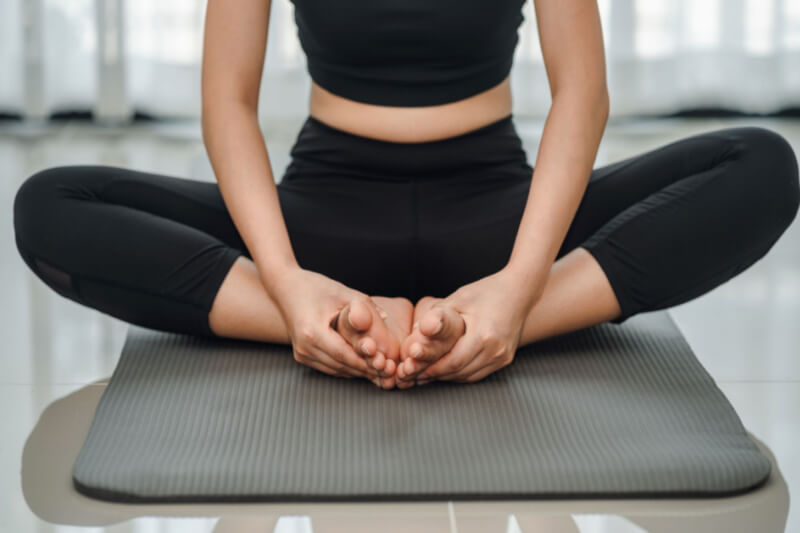
This yoga posture grounds you during moments when anxiety overcomes you. As a result, It is also considered to be one of the best yoga for depression.
- Be seated with your legs outstretched in front of you.
- Bring the soles of your feet together with your knees falling on either side.
- Keep your spine straight, allowing tension to drain away.
-
Upward-Facing Dog Pose (Urdhva Mukha Svanasana)
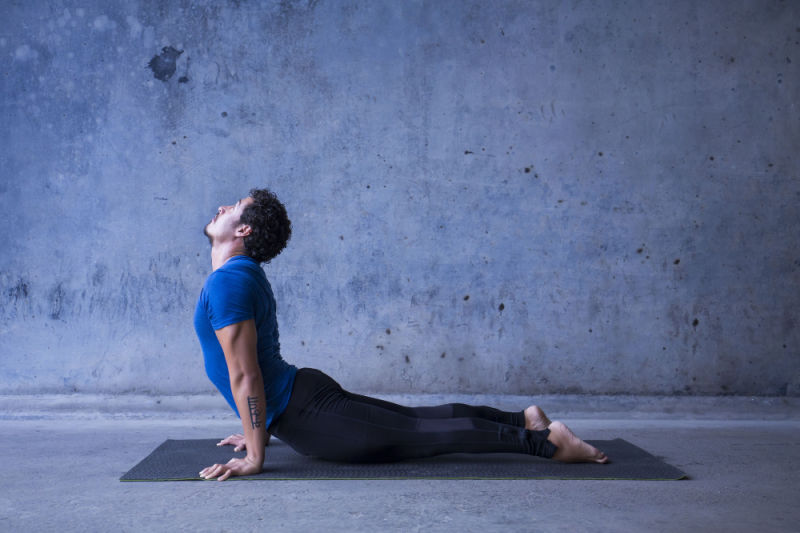
This asana opens your heart, which aids you in removing pent-up emotions from your chest. It also releases stress from a stiff back. As a result, it is one of the best yoga poses for depression.
- Lie flat on your stomach and point out your toes.
- Place your palms near your shoulder blades.
- Push into your palms to raise your upper body, smoothly curving your spine.
- Keep your shoulders back and lift your chest and head. Look ahead.
- Lengthen your body from head to toe and take a few deep breaths before gently releasing the yoga pose.
Try these yoga poses if you struggle with depression and anxiety. However, please stop immediately if you feel uneasy during any exercise/activity. Do not strain yourself, and practise morning meditation only if you feel comfortable and based on your existing health conditions.
Stay tuned to the Activ Living Community. Keep up to date with the latest health tips and trends through expert videos, podcasts, articles, and much more in nutrition, fitness, mindfulness, and lifestyle conditions like Asthma, Blood Pressure, Cholesterol, and Diabetes.
You may also be interested in the following blogs:
- How Can Mushrooms Prevent The Risk Of Depression?
- 3 Yoga Poses That Every Person With Diabetes Should Try
Popular Searches
How to lower blood pressure | Fruits good for liver | Unhealthy foods | Ragi Benefits | Basal Metabolic Rate | Acupressure points for High Blood Pressure | Ayurvedic medicine for blood pressure | How to control cholesterol at home | Homeopathy for Asthma | Biological Age | Home remedies for TB | Natural beta blockers | Negative effects of internet | Types of walking | Blood pressure calculator | Blood sugar calculator | BMI Calculator





 1800-270-7000
1800-270-7000


